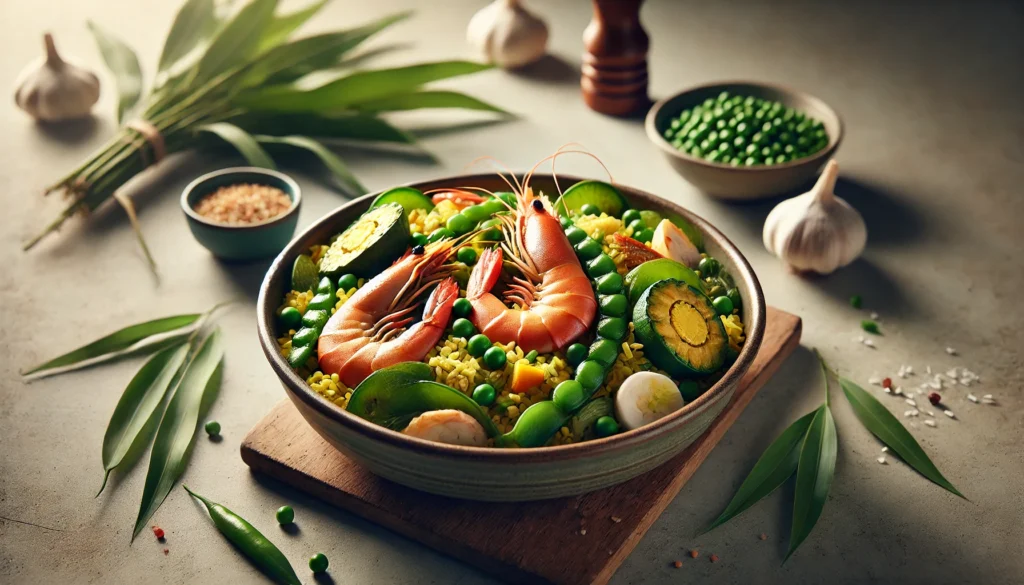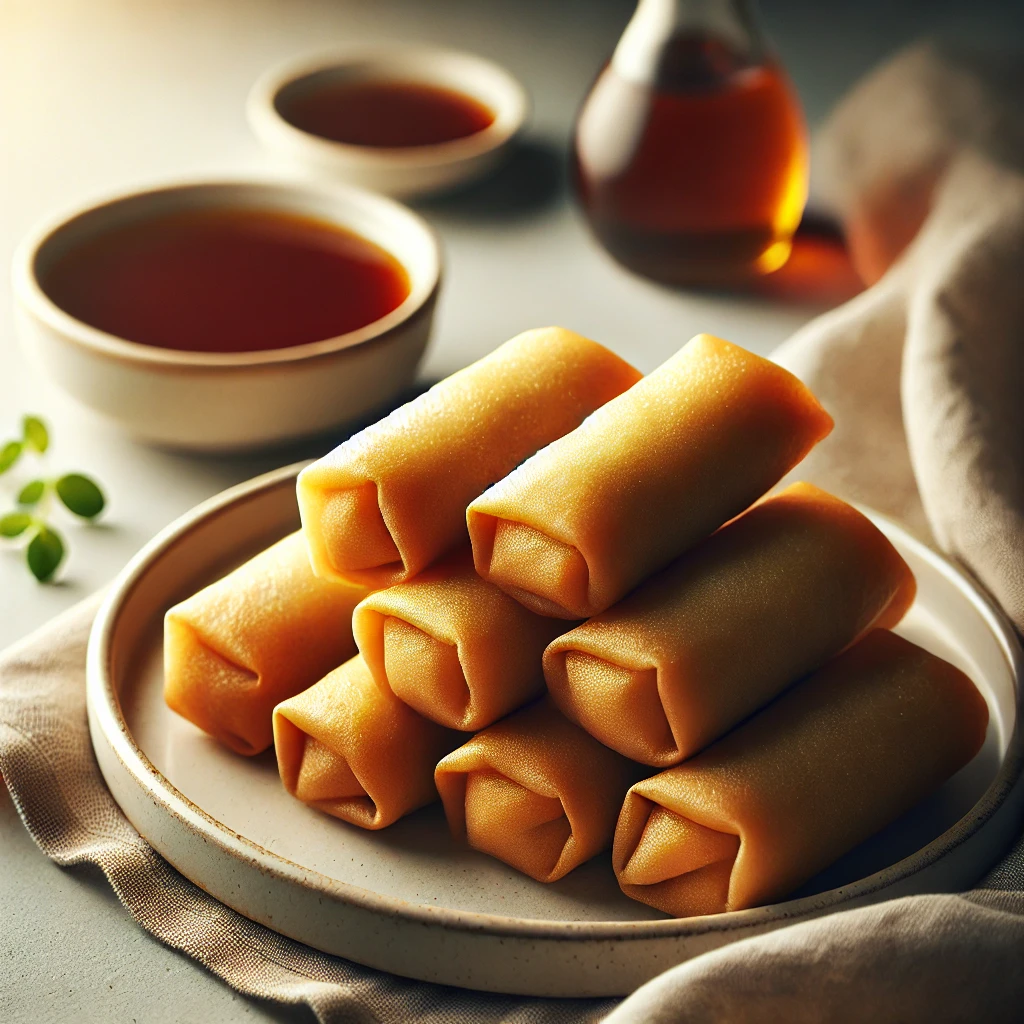Have you ever wondered what happens when two culinary powerhouses collide? Picture this: the tangy, sour notes of Filipino sinigang melding with the rich, saffron-infused flavors of Spanish paella. It’s a match made in gastronomic heaven, and today, we’re diving into the world of Sinigang Paella – a fusion dish that’s taking the culinary world by storm.
As someone who grew up in a Filipino household but spent years traveling through Spain, I’ve always been fascinated by the intersection of these two vibrant cuisines. Both have their roots in colonial history, with Spain leaving an indelible mark on Filipino food culture during its 333-year rule. But it’s the way these flavors have evolved and intertwined over centuries that truly captivates the palate.
Sinigang Paella is more than just a dish; it’s a celebration of cultural harmony on a plate. It brings together the comforting sourness of sinigang – a Filipino soup known for its tamarind-based broth – with the luxurious textures and techniques of paella, Spain’s most iconic rice dish. The result? A symphony of flavors that pays homage to both culinary traditions while creating something entirely new and exciting.
What makes this fusion particularly intriguing is how it caters to various dietary preferences. While traditional paella often features a mix of meats and seafood, our Sinigang Paella can be easily adapted for vegetarians or even vegans. The key lies in the rich, flavorful broth and the perfectly cooked rice, which form the heart of this dish. So whether you’re a meat lover, a seafood enthusiast, or a plant-based eater, there’s a version of Sinigang Paella waiting to be discovered.
Recipe Ingredients
Let’s dive into the ingredients that make Sinigang Paella a truly unique culinary experience:
| Ingredient | Quantity | Notes |
|---|---|---|
| Arborio rice | 2 cups | Short-grain rice is crucial for the right texture |
| Tamarind paste | 2 tablespoons | Provides the signature sinigang sourness |
| Tomatoes | 3 medium, diced | Adds acidity and sweetness |
| Onion | 1 large, finely chopped | Base flavor for the sofrito |
| Garlic | 4 cloves, minced | Aromatic base |
| Bell peppers | 2, mixed colors, sliced | Adds color and sweetness |
| Green beans | 1 cup, trimmed and cut | Traditional sinigang vegetable |
| Eggplant | 1 medium, cubed | Adds texture and absorbs flavors |
| Pork belly | 300g, cubed (optional) | Traditional meat for sinigang |
| Shrimp | 300g, peeled and deveined (optional) | Adds seafood flavor |
| Chicken stock | 4 cups | Base for the paella broth |
| Saffron threads | A pinch | Signature paella spice |
| Paprika | 1 teaspoon | Adds depth and color |
| Olive oil | 1/4 cup | For cooking |
| Salt and pepper | To taste | For seasoning |
| Lemon wedges | For serving | Adds fresh acidity |
Substitutions:
- For a vegetarian version, omit the pork and shrimp, and use vegetable stock instead of chicken stock.
- For a vegan option, you can add firm tofu cubes or your favorite plant-based protein.
- If tamarind paste is unavailable, you can use lemon juice or rice vinegar for sourness, though the flavor profile will be slightly different.
Recipe Instructions
Follow these steps to create your own Sinigang Paella masterpiece:
- Prepare the broth:
In a large pot, combine the chicken stock, tamarind paste, and a pinch of saffron. Bring to a simmer and keep warm. - Create the sofrito:
Heat olive oil in a large paella pan or wide, shallow skillet. Sauté onions and garlic until translucent. Add diced tomatoes and cook until they break down into a thick sauce. - Cook the meat (if using):
Push the sofrito to one side of the pan. Add pork belly cubes and cook until browned. If using shrimp, add them now and cook until just pink. Remove shrimp and set aside. - Add the rice:
Stir the rice into the sofrito and meat, coating each grain with the flavorful oil. Toast for a minute or two. - Build the paella:
Pour in the warm tamarind-saffron broth. Add paprika, salt, and pepper. Stir gently to distribute the ingredients evenly. Bring to a boil, then reduce heat to a gentle simmer. - Add vegetables:
Arrange bell peppers, green beans, and eggplant on top of the rice. Do not stir from this point on – this helps create the coveted socarrat (crispy bottom layer). - Cook to perfection:
Let the paella simmer for about 20 minutes, or until the rice is tender and the liquid is absorbed. If using shrimp, return them to the pan in the last 5 minutes of cooking. - Create the socarrat:
In the last few minutes, increase the heat slightly to crisp up the bottom layer of rice. Listen for a gentle crackling sound, but be careful not to burn it. - Rest and serve:
Remove from heat, cover with a clean kitchen towel, and let rest for 5-10 minutes. Garnish with lemon wedges and serve directly from the pan.
Recipe Tips & Variations
Tips for Success:
- Use a wide, shallow pan to ensure even cooking and maximize the socarrat formation.
- Don’t stir the paella once you’ve added the broth – this helps develop distinct layers of flavor and texture.
- If the rice is still too firm but the liquid has been absorbed, you can add a bit more hot broth or water around the edges of the pan.
Variations:
- Seafood Sinigang Paella: Use a mix of shrimp, mussels, and white fish instead of pork.
- Vegetable Sinigang Paella: Add more vegetables like okra, radish, or water spinach for an authentic sinigang feel.
- Spicy Sinigang Paella: Include some bird’s eye chili or chili flakes for a kick of heat.
Storage Instructions:
Sinigang Paella is best enjoyed fresh, but leftovers can be stored in an airtight container in the refrigerator for up to 3 days. Reheat gently in a pan with a splash of water to restore moisture.
Nutritional Information
| Nutrient | Amount per Serving |
|---|---|
| Calories | 450 |
| Protein | 18g |
| Carbohydrates | 65g |
| Fat | 15g |
| Fiber | 4g |
| Sodium | 580mg |
Note: Nutritional values are approximate and may vary based on specific ingredients and portion sizes.
As I sit here, savoring a steaming plate of Sinigang Paella, I’m transported back to my grandmother’s kitchen in Manila, where the scent of sinigang would waft through the air every Sunday. But there’s also a whisper of memories from lazy afternoons in Barcelona, where paella was the centerpiece of every gathering. This dish isn’t just a meal; it’s a bridge between two cultures, a testament to the beautiful ways in which food can bring us together.
I encourage you to embark on this culinary adventure and create your own Sinigang Paella. Don’t be afraid to experiment with ingredients or adjust the sourness to your liking. The beauty of fusion cuisine lies in its flexibility and the personal touch each cook brings to the dish.
Once you’ve tried this recipe, I’d love to hear about your experience. Did you stick to the traditional ingredients, or did you put your own spin on it? Share your creations on social media and tag us – your innovative twists might inspire fellow food enthusiasts!
And if you enjoyed this fusion of Filipino and Spanish flavors, why not explore more of our globally inspired recipes? From Korean-Mexican tacos to Indian-Italian pasta dishes, there’s a world of culinary creativity waiting for you in our recipe collection.
Remember, cooking is an adventure, and every plate is a chance to explore new horizons. So fire up that stove, gather your ingredients, and let’s continue this delicious journey together!
Additional Elements
Related Recipes and Pairings:
- Traditional Spanish Paella
- Filipino Sinigang Soup
- Garlic Fried Rice (Perfect side dish)
- Mango Coconut Dessert (A sweet ending to your meal)
Serving Suggestions:
Serve your Sinigang Paella directly from the pan for an authentic experience. Accompany with a fresh green salad dressed with a light vinaigrette to balance the rich flavors of the paella. For beverages, a crisp white wine like Albariño or a refreshing calamansi juice would pair beautifully.
Equipment Recommendations:
- Large paella pan (30-40cm diameter)
- Wooden spoon or spatula
- Sharp chef’s knife for ingredient preparation
- Mortar and pestle for grinding saffron (optional)
Historical and Cultural Context:
The fusion of Filipino and Spanish cuisines is rooted in history. Spain colonized the Philippines for over three centuries, introducing ingredients like tomatoes, garlic, and onions, which are now staples in Filipino cooking. Paella, while not directly introduced during this period, shares common elements with Filipino rice dishes. Sinigang, on the other hand, is believed to predate colonial times, with its sour flavor profile being a hallmark of indigenous Filipino cuisine. This fusion dish represents not just a blend of flavors, but a harmonious meeting of two rich culinary histories.
Disclaimer: This recipe is based on culinary knowledge and trends up to 2019. Ingredients, techniques, and dietary recommendations may have changed since then. Please consult current sources for the most up-to-date information on food safety and nutrition. If you notice any inaccuracies in this post, please report them so we can correct them promptly.




